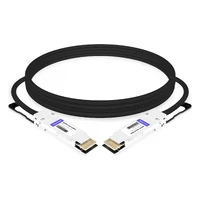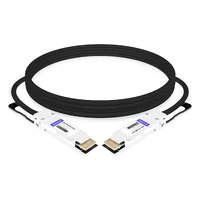The 400G QSFP-DD Passive Direct Attach Copper (DAC) cable is necessary for high-speed data transmission environments such as data centers and networking applications. This article offers an all-encompassing description of these wires’ qualities, advantages, and usage considerations. However, with the increasing demand for data transmission, IT professionals must know the specifications and capabilities of 400G QSFP-DD DAC cables if they need efficient network solutions. Technicalities, deployment scenarios, and performance metrics will be looked into so that people can understand more about these connectivity devices used to meet the ever-growing bandwidth requirements of modern infrastructures.
Table of Contents
ToggleWhat is a DAC Cable?
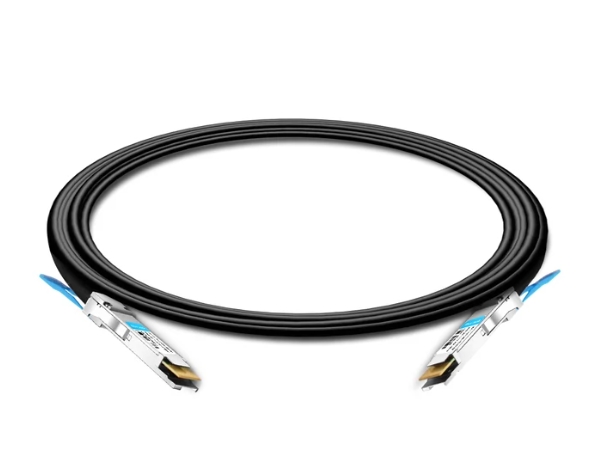
Understanding QSFP-DD DAC
The QSFP-DD (Quad Small Form-factor Pluggable Double Density) DAC cable is an interconnect solution that caters to 400G data transfer rates. It is this type of cable that takes the least space due to its compactness and thus doubles even thrice the density of regular traditional QSFP interfaces. The passive copper cabling within the QSFP-DD DAC cables connects directly to ports on compatible switches, servers, and other networking devices with low latency and power consumption. They have better thermal performance and reduce electromagnetic interference, hence ideal for short-distance communication within data centers where management of large amounts of cheap bandwidths is required for success in business continuity.
Key Features of a 400g DAC Cable
- Broad Bandwidth Capability: A 400G DAC cable will transfer data at up to 400 gigabits per second, making it suitable for high-performance applications in data centers and enterprise networks.
- Small Design: Its small form factor increases port density, maximizes rack space, and allows efficient installations in tight spaces.
- Passive Connectivity: This type of copper cabling consumes less power and produces less heat, making it more environmentally friendly, especially for heavy-traffic areas.
- Low Latency: These cables have direct-attach capabilities that provide the minimum round-trip time necessary for real-time transmission of information critical to cloud computing and other big data analytics applications.
- Cost-effective: Compared with optical options, 400G DAC cables are much cheaper when used over short distances, so organizations can save on costs without compromising on performance levels.
- Improved Thermal Performance: The design ensures that heat dissipation is optimized; this contributes to the longer lifespan of networking devices while maintaining their operational efficiency.
- Reduced Electromagnetic Interference (EMI): Strong construction techniques help reduce EMI interference, thereby ensuring signal integrity over shorter links, which is vital in supporting reliable connectivity within densely populated areas.
Applications of QSFP-DD Direct Attach Copper Cable
QSFP-DD Direct Attach Copper (DAC) cables are widely used in high-performance computing environments, data centers and enterprise networks; they are particularly suitable for:
- Interconnection of Data Center: Connect servers, switches, and storage systems in a data center to ensure high bandwidth and low latency for data-intensive applications.
- High-Performance Computing (HPC): They are most often used on supercomputers or large-scale computation clusters where data needs to be processed quickly with minimal delays.
- Financial services: In trading environments, low-latency transactions are supported by real-time transfer, which is competitive and essential.
- Cloud Computing: Supporting cloud infrastructure by providing faster rates at which information can be transferred, thus meeting scalable requirements needed for processing large amounts of flexible data.
- Video Streaming and Broadcasting: They work well when sending HD video signals between devices so that streaming never stops.
- Telecommunications: Various equipment within central offices and distribution points connected through telecom networks using these cables improves network performance.
This list shows how versatile and dependable QSFP-DD DAC cables can be when meeting the changing needs of today’s network designs.
How to Choose the Right 400g DAC Cable?
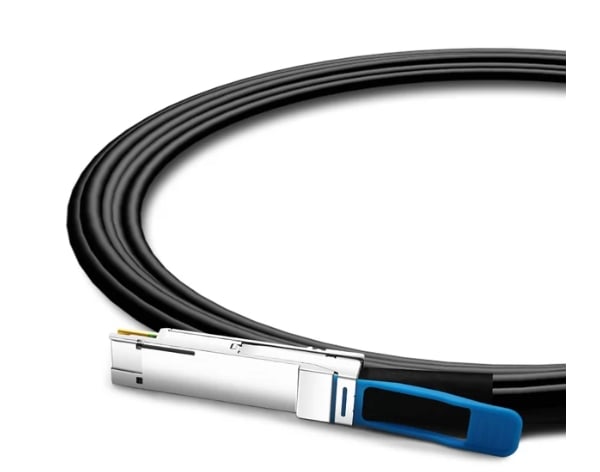
Factors to Consider for Selecting DAC Cable
When choosing a 400G Direct Attach Copper (DAC) cable, several factors should be considered to achieve the best performance and compatibility with the existing network infrastructure:
- Length of the Cable: DAC cables come in different lengths, typically varying from 0.5 meters up to 8 meters; therefore, it is important to choose the length needed based on the distance requirement within your setup. Longer cables may cause signal loss, while shorter ones can reduce cluttering and enhance airflow.
- Data Rate: Confirm that the selected DAC cable supports the required data rate. For example, if you are working with 400G applications, ensure they have been rated for 400G throughputs; otherwise, bandwidth bottlenecks, which can affect overall network performance, might occur.
- Cable Gauge: Thickness also affects flexibility and signal integrity; thus, thicker wires usually perform better over long distances but may not be very flexible. In this case, consider what is most critical between installation requirements and physical constraints.
- Type of Connector: Ensure compatibility with the equipment being used. Ideally, QSFP-DD connectors were designed for high-speed switches or routers, so both source and destination devices must allow connections using such types without any problem arising during transmission along those lines that support the latest protocols for fast speeds.
- Power Usage: Evaluate power efficiency when purchasing any given model among available choices since all Dac cables consume less energy than optical transceivers; however, specifications mentioned within them could be utilized as a guide towards selecting one that matches energy-saving objectives.
- Environmental Sensitivity: Consider the operating environment because temperature variations, humidity levels, and vibrations can interfere with how these wires function, thereby causing fluctuations in performance either positively or negatively depending on the situation at hand. Thus, if harsh conditions are expected, go for those having higher resistance against such environments, represented by strong outer jackets.
- Cost-Effectiveness: While technical requirements must be met, cost should not be overlooked, considering budgetary limitations. It is advisable to always strike a balance between quality and price to maximize networking investments.
These considerations will help network architects and engineers make informed choices that improve the uptime, efficiency and speed of their data transmission environments.
Comparing 1m vs. 3ft 400g DAC Cables
Many technical factors must be considered when comparing 1m with 400G Direct Attach Copper (DAC) cables of about 3ft (0.3m).
- Signal Integrity: Both lengths can support high-speed data transmission; however, the shorter cable may slightly outperform its counterpart in terms of signal integrity. This is mainly because signals are reduced over a shorter distance, and this can be very important at high frequencies such as those used by 400G networks.
- Flexibility and Installation: Usually, the one-meter-long DAC cable is more flexible and, hence, easier to handle in confined spaces or areas with high-density equipment. On the other hand, three feet provide some slack for installations that require longer runs but may cause disorder where excessive cabling results in clutter within the environment.
- Cost and Availability: DAC cables typically have different prices depending on their lengths and other factors like manufacturers’ specifications, etcetera. Shorter ones, like one meter, can often be cheaper than longer ones, but this varies with vendor discounts or bulk purchase agreements.
In conclusion, whether to choose between a 1m or a 3ft 400G DAC cable should be influenced by installation space requirements, concerns about signal integrity, and budget limitations. Also, when selecting which network to deploy, consider the operational environment and future scalability needs.
Compatibility with QSFP-DD to QSFP-DD and Other Standards
Some industry standards must be followed to ensure that 400 G direct-attach copper (DAC) cables work well, specifically in a QSFP-DD to QSFP-DD configuration. These cables are supposed to be interoperable with different kinds of network equipment and protocols that enable smooth data transmission, as ensured by the Ethernet Alliance, which developed the QSFP-DD standard.
- Backward compatibility: The design of QSFPDD DACs allows them to work with earlier versions like QSFP+ and QSFP28, which allows for flexible upgrading without changing everything from scratch.
- Electrical Specifications: To support speed rates of up to 400Gbps while maintaining signal integrity throughout connections, these electrical interface specifications should adhere to IEEE 802.3 standards for ethernet.
- Manufacturer Compliance: To be compatible with network switches/routers designed for high-bandwidth applications, you must purchase only DACs from trustworthy vendors who strictly follow these rules.
In conclusion, for efficient performance within deployments, one needs QFSP DD-TO QFSP DD Dacs that conform to signal integrity and inter-operability requirements per industry norms.
Benefits of Using Passive DAC Cables Over Others
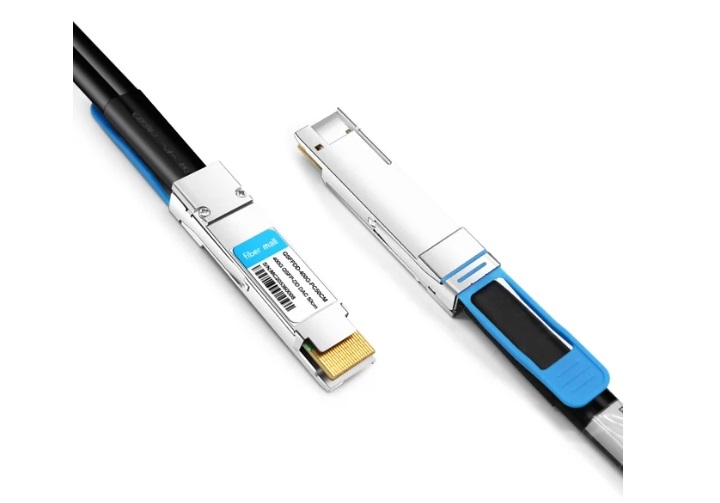
Advantages of Passive Direct Attach Copper
In high-speed data networking environments, passive direct attach copper cables have many important benefits:
- Cheapness: Generally, passive DAC cables are more economical than active optical cables (AOCs) and traditional fiber solutions. Their more straightforward design reduces manufacturing and installation costs, so they are favored for budget-conscious deployments.
- Low-Latency: Passive DAC cables provide lower latency connections as they do not require any signal conversion. These are best suited for applications where response time is critical, like high-frequency trading or real-time data processing.
- Less Power Hungry: Unlike active cables, passive DACs don’t need power. This inherent energy efficiency helps save operation costs and is useful when power usage in large-scale installations needs to be reduced.
- Ease of Use & Installation: Due to their lightweight nature and flexibility, usually passive DAC cables are easier to handle and install. This is very beneficial, especially in data centers, where cable clutter management and airflow optimization are essential.
- Longevity & Trustworthiness: Compared with delicate fiber connections, which can easily fail over time even if used under normal conditions, rugged construction guarantees reliability of performance over time by lowering the chances of failure for passive DACs. Therefore, they are able to cope with demanding applications.
To sum up, Passive Direct-Attach Copper (DAC) Cables combine cost savings with improved performance and convenience during installation, making them the best choice for operators who want efficient connectivity solutions.
Performance of QSFP-DD Passive DAC Cables
The efficiency of high-speed data transmission by QSFP-DD Passive DAC cables is measured against several metrics. To begin with, these cords can support very fast data rates of up to 400 Gbps which suits them for use in contemporary data centers that necessitate swift information sharing among devices. In addition, the low latency inherent in them achieved through direct electrical signaling reduces delay time thereby boosting system responsiveness generally.
More so, QSFP-DD Passive DACs are built to work effectively within short distances, usually not exceeding 5 meters, as required by most wiring systems in closely situated equipment typical of many data centers. Signal integrity over these limited lengths is preserved due to their reduced vulnerability to electromagnetic interference, thus ensuring stable performance under crowded networking environments.
Thermal performance is another aspect that enhances the reliability of passive DAC cables. Unlike active cables, which produce excessive heat, they help maintain the right conditions for operation inside enclosures and racks. All-inclusive speed, cost-effectiveness, and efficiency are among the key attributes of QSFP-DD Passive DAC cables, making them suitable for organizations seeking to strike a balance between these factors in their network infrastructure design.
Cost-effectiveness and Energy Efficiency
Not only are QSFP-DD Passive DAC cables high-performance, but they also bring along cost-effectiveness and energy efficiency benefits. These cables usually have a lower initial price compared to active optical cables, thereby becoming an economically viable option for data center operators who want to maximize their investment in connectivity solutions. Additionally, because of their passive nature, these cables do not require any power consumption beyond what is needed by the component itself, which, over time, saves operational expenses.
Furthermore, energy efficiency in QSFP-DD Passive DAC Cables helps in reducing total energy spending within data centers that are now under increasing pressure due to their environmental impact. Sustainability is supported through reduced power usage, which cuts down on carbon footprints associated with energy use, thus enabling enterprises to achieve a fine balance between performance, cost, and power needs in modern networking using QSFP-DD Passive DAC Cables as a preferred alternative.
Setting Up and Installing a 400g Passive DAC Cable
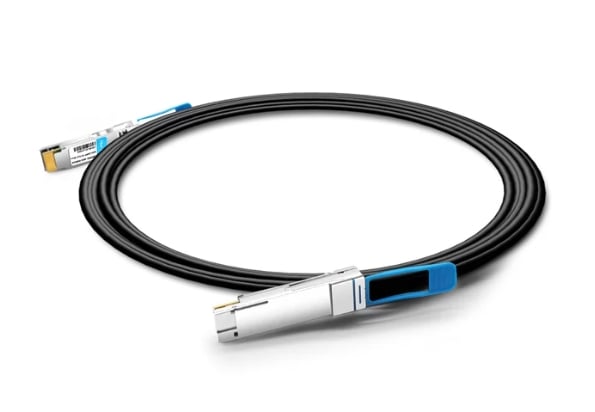
Step-by-Step Installation Guide
- Preparation: To avoid electrical accidents, have QSFP-DD Passive DAC cables and compatible switches or servers available and powered off.
- Find the Ports: Look for the QSFP-DD ports on your networking devices. They are usually marked with labels for easy identification.
- Cable Orientation: Observe how the cable is oriented. Note that QSFP-DD connectors have a particular keyed design where they can only fit one way without forcing it or causing damage while inserting into ports.
- Connect the Cable: Delicately push one end of a Passive DAC cable into its corresponding QSFP-DD port on the first device until it clicks in place, then do the same thing at the other end for the second device.
- Power Up Equipment: Power up networking equipment after connecting both ends securely. Verify that systems start normally and detect these new cables as connected devices.
- Check Connectivity: Once you install them, test network connectivity and performance; use diagnostic tools to check link status and ensure seamless communication between different devices within a network.
- Cable Management: Eventually, cabling can be cleaned up by tying or using other means to manage cables to prevent tangling among wires, which may block proper airflow around equipment, thus affecting its cooling efficiency.
The above steps will enable the successful installation of QSFP-DD Passive DAC cables and provide fast, reliable connection speeds in your data center or networking environment.
Common Installation Issues and Solutions
- Error in connecting: One of the common issues during the installation process is connector misalignment. If the connectors fail to fit smoothly into ports, they may be wrongly placed. Always ensure that the keyed design on these connectors is aligned with the shape of the port to prevent any damages that could occur through forcing it in.
- Power supply failure: Sometimes, networking devices fail to power on because of inadequate or faulty power supplies. Check if there is enough current getting into the equipment before plugging in cables; also, troubleshoot power-related problems using LEDs on equipment or alert systems.
- Connectivity issues post-installation: Devices might not communicate as expected after being installed. This can be caused by wrong switch configurations, incompatible switches, damaged cables, etc. Do a link status check and review device configuration, ensuring all settings are according to the required specification for best performance. It is also advisable to replace any broken wires that can restore connectivity.
Knowing these problems and their solutions will make your installation go smoother while keeping a more dependable network running.
Maintenance Tips for Long-term Use
To keep QSFP-DD Passive DAC cables working well and for an extended life, try these maintenance tips:
- Frequent Inspection: Check the cables and connectors periodically for any visible signs of wear, damage, or dust. Ensure that connectors are clean and free from dirt, as dirt can affect signal integrity.
- Control Temperature and Humidity: Keep your cables at recommended temperature and humidity ranges during storage or operation. Extremely high temperatures or too much moisture may compromise the cable’s performance and longevity.
- Manage Cables Properly: Use appropriate cable management techniques to prevent wires from bending, kinking, or exerting too much tension. Neatly arranging wires will not only protect against physical damage but also allow better airflow within equipment racks.
- Firmware and Software Updates: Always look out for software updates and firmware upgrades for your networking devices. These actions make them compatible with each other and with these wires, which in turn enhances network efficiency as a whole.
- Test & Monitor: Create a habit of regularly testing the connectivity and overall performance of the entire system. Diagnostic tools can be employed to discover potential problems before they become full-blown ones, keeping your system dependable.
The utilization of such practices will ensure that your QSFP-DD Passive DAC cables serve reliably throughout their useful life span.
How Are DAC Cables Tested? Testing Program Explained
Testing Standards for 400g DAC
Various industry-standard testing protocols help evaluate the performance of 400G Direct Attach Copper (DAC) cables. These tests ensure that the wires meet strict quality and reliability standards.
- IEEE 802.3bs: This standard sets out the physical layer specifications for 400GBASE, including how to test electrical characteristics and performance measurements for DAC cables. Complying with these rules assures compatibility in high-speed networks.
- SFF-8431: This standard governs the specification of SFP transceiver modules and provides test conditions designed specifically for passive copper cables. According to SFF-8431, performance tests are recommended to evaluate the integrity and functionality of 400G DAC cable systems.
- ISO/IEC 11801: This international standard applies to generic cabling for customer premises and specifies testing methods applicable to balanced cabling systems. It ensures that different installation environments are considered during the validation of the performance of 400G DAC cables so they can handle high data rates without much signal power loss.
Manufacturers and users who follow these widely recognized benchmarks will be able to guarantee that their products or deployments meet the standards necessary for modern data centers or network infrastructures where 400 gigabit-per-second links may be used frequently.
Ensuring Reliability and Performance
To guarantee the trustworthiness and competency of 400G Direct Attach Copper (DAC) cables, there are a few best practices and additional standards that can be implemented in conjunction with the aforementioned main testing protocols.
- Regular Compliance Testing: Continuous checking for conformity to performance specifications should be done at different stages, such as manufacturing through post-installation, using IEEE, SFF, ISO, etc. standards.
- Environmental Considerations: Cable performance may be affected by temperature changes and physical situations. Therefore, it is important to know these so that they can be controlled during installation and operation.
- Quality Control Measures: Strict quality control measures need to be followed during the manufacturing process, which will help maintain good performance levels of DAC cables and defect-free production.
- End-of-Life Management: Monitoring lifespan together with performance decay of DAC cable enables replacement before failures affect network efficiency.
Following these guidelines will significantly improve the reliability as well as the overall functionality of the data center or any other high-speed network environment having 400G DAC cables.
Understanding Certification Processes
When it comes to the certification of 400G Direct Attach Copper (DAC) cables, their importance in meeting the performance standards required for any high-speed network infrastructure is undisputed. The Institute of Electrical and Electronics Engineers (IEEE), the Small Form Factor (SFF) Committee, and the International Organization for Standardization (ISO) are some primary certifiers.
- IEEE: Based on these specifications, IEEE standards provide the technical rules that DAC cables must adhere to to ensure that they can work together with other systems at higher speeds. Generally, compliance with IEEE standards is important when it comes to market entry and product reliability.
- SFF: SFF’s concentration point lies within cable connectors’ physical properties and electrical characteristics, taking into account various cabling schemes used in data centers around the world. Products conforming to this specification will, therefore, be able to connect seamlessly with any variety of networking equipment.
- ISO: ISO certification places great weight on overall quality management systems during manufacturing processes, helping maintain uniformity in terms of quality among different manufactured goods vis-à-vis global demand levels. It also ensures that such products meet worldwide market needs.
All these certificates can assure manufacturers about their 400G DAC cable’s improved efficiency through speed upgradation in networking environments where more rapid connections are required.
Reference Sources
Frequently Asked Questions (FAQs)
Q: What is a QSFP-DD Passive Direct Attach Copper DAC Cable?
A: A QSFP-DD (Quad Small Form-Factor Pluggable Double Density) Passive Direct Attach Copper DAC Cable is a variant of high-speed twinax cable for short-distance data transmission in networking environments at speeds up to 400Gbps (400-gigabit) that connects various devices within a rack to another adjacent rack, so it is cost-effective.
Q: How does a QSFP-DD Passive DAC Cable compare to an optical transceiver?
A: Regarding cost and power consumption, the passive copper cables used by QSDP-DD are generally more efficient since they cost less and consume less power than their optical counterparts. However, there are some drawbacks, such as limited distance support—usually only 3m compared with longer ranges supported by optic solutions—higher costs, and greater energy needs that may be incurred when using optics instead.
Q: What lengths are QSFP-DD Passive DAC Cables available in?
A: They come in different sizes, i.e., half a meter or 0.5m; one point five meters or 1.5m; two meters or 2m; three meters or 3m, among others; thus, can work well for very short distances connections like those found within racks or between neighboring ones.
Q: What applications are suitable for QSFP-DD Passive DAC Cables?
A: These types of cables work best with high-speed connections over short distances within data centers, telecom networks, and enterprise environments where fast communication is required between switches supporting different ethernet standards ranging from 100g through 200g up to 400g.
Q: Are QSFP-DD Passive DAC Cables compliant with any standards?
A: Yes, they comply fully with IEEE802.3bj and IEEE802.3cd, which ensures compatibility among many brands under a multi-source agreement(QSFPDD-MSA).
Q: What are the benefits of using twinax cables in QSFP-DD assemblies?
A: Using twinax cables in QSFP-DD assemblies is advantageous because it enables fast data transfer over short distances at low costs. Furthermore, they have low latency, consume less energy, and are highly dependable, hence widely used in high-performance computing and data center settings.
Q: What should one consider when dealing with QSFP-DD Passive DAC Cables?
A: Networking devices like Dell switches, Mellanox routers, or Amphenol FS.com could be some of the equipment that works well with QSFP-DD Passive DAC Cables. Confirming compatibility with specific gear will help realize its maximum potential.
Q: Define PAM4 modulation. Do QSFP-DD Passive DAC Cables support it?
A: It refers to Pulse Amplitude Modulation with four levels, a scheme for increasing data transmission rates. These cables support PAM4 modulation, enabled by the QSFP-DD passive DACs, to achieve higher speeds, such as 200 g and 400 g Ethernet connections.
Q: Are there any warranties on QDFP passive direct attach copper cables?
A: Suppliers can offer lifetime warranties on QDFP passive direct-attach copper cables so that their clients can depend on them for a long without worrying about their functionality or availability.
Q: Can we use QDFP passive direct attach copper cable for high-speed Ethernet applications?
A: Certainly, yes! Designed for this purpose alone, they support all standards, including 100Gbps up to 400Gbps Ethernet standards. Their reliability and efficiency make them even more suitable when deployed alongside other critical components within data centers.

